 W
WThe High Priest of Amun or First Prophet of Amun was the highest-ranking priest in the priesthood of the ancient Egyptian god Amun. The first high priests of Amun appear in the New Kingdom of Egypt, at the beginning of the Eighteenth Dynasty.
 W
WAmenhotep was the High Priest of Amun towards the end of the Twentieth Dynasty of Egypt, serving under Ramesses IX, Ramesses X and Ramesses XI. He was the son of Ramessesnakht, the previous high priest of Amun. It is not beyond dispute who succeeded him in office. For a long time it was assumed that he was followed by the High Priest Herihor. However, Karl Jansen-Winkeln has suggested that Amenhotep was instead succeeded by the High Priest Piankh. We know the names of several of his brothers and a sister:his (eldest?) brother, the prophet of Amun Meribast II his brother, the Chief Steward Usimarenakth II his sister Aatmeret I his brother, the Second Prophet of Amun Nesamun I
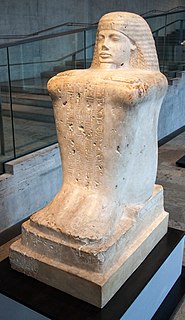 W
WBakenkhonsu was a High Priest of Amun in ancient Egypt during the reign of Pharaoh Ramesses II. Information about his life was found on the back of his block statue. The information on the statue provides details about the education of young Egyptian noblemen at that time and the career of priests.
 W
WHapuseneb was the High Priest of Amun during the reign of Hatshepsut.
 W
WHaremakhet, also Horemakhet or Harmakhis, was an ancient Egyptian prince and High Priest of Amun during the 25th Dynasty.
 W
WHarsiese B was a High Priest of Amun in 874 BC. Earlier Egyptologists assumed he was both the High Priest of Amun (HPA) and son of the High Priest Shoshenq C, who may have become a king at Thebes. However, recent research by Karl Jansen-Winkeln shows that all the monuments of the first (King) Harsiese A demonstrate that he was never Theban High Priest of Amun in his own right, merely a regular Priest of Amun. While the earlier Harsiese was certainly a king at Thebes, he is clearly a different person from the later Harsiese, Harsiese B, who is attested as a High Priest of Amun. Jansen-Winkeln further shows that Harsiese A's son, [...du], was only an ordinary Priest of Amun.
 W
WHerihor was an Egyptian army officer and High Priest of Amun at Thebes during the reign of Pharaoh Ramesses XI.
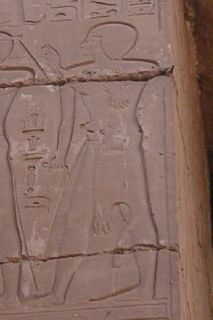 W
WIuput A or simply Iuput, was High Priest of Amun from 944 to 924 BCE, during the reigns of his father Shoshenq I and his brother Osorkon I.
 W
WIuwelot or Iuwlot was a High Priest of Amun at Thebes and military commander during the reign of pharaohs Osorkon I and Takelot I of the 22nd Dynasty.
 W
WMasaharta or Masaherta was the High Priest of Amun at Thebes between 1054 and 1045 BC.
 W
WMenkheperraseneb I was a high official under the reign of king (pharaoh) Thutmose III and Amenhotep II. He was a High Priest of Amun and therefore the most important religious official in his days.
 W
WMenkheperre, son of Pharaoh Pinedjem I by wife Duathathor-Henuttawy, was the High Priest of Amun at Thebes in ancient Egypt from 1045 BC to 992 BC and de facto ruler of the south of the country.
 W
WMenkheperreseneb II was a High Priest of Amun, Superintendent of the Gold and silver treasuries, and Chief of the Overseers of Craftsmen. He served at the time of Thutmose III and Amenhotep II, and may have been buried in his Theban tomb, TT112.
 W
WMery was a High Priest of Amun from the time of Amenhotep II.
 W
WNebneteru Tenry was an ancient Egyptian High Priest of Amun under Seti I.
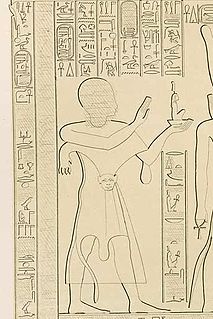 W
WNimlot C was a High Priest of Amun at Thebes during the reign of pharaoh Osorkon II of the 22nd Dynasty.
Nitocris II was an ancient Egyptian princess and priestess during the reign of pharaoh Amasis II of the 26th Dynasty.
 W
WUsermaatre Setepenamun Osorkon III Si-Ese was Pharaoh of Egypt in the 8th Century BC. He is the same person as the Crown Prince and High Priest of Amun Osorkon B, son of Takelot II by his Great Royal Wife Karomama II. Prince Osorkon B is best attested by his Chronicle—which consists of a series of texts documenting his activities at Thebes—on the Bubastite Portal at Karnak. He later reigned as king Osorkon III in Upper Egypt for twenty-eight years after defeating the rival forces of Pedubast I/Shoshenq VI who had apparently resisted the authority of his father here. Osorkon ruled the last five years of his reign in coregency with his son, Takelot III, according to Karnak Nile Level Text No. 13. Osorkon III's formal titulary was long and elaborate: Usermaatre Setepenamun, Osorkon Si-Ese Meryamun, Netjer-Heqa-waset.
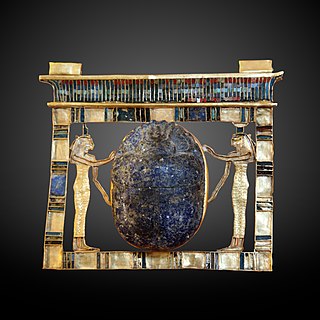 W
WThe ancient Egyptian Noble Paser was vizier in the reigns of Seti I and Ramesses II, during the 19th Dynasty. He would later also become High Priest of Amun.
 W
WPiankh was a High Priest of Amun during the 21st Dynasty.
 W
WPinedjem I was the High Priest of Amun at Thebes in Ancient Egypt from 1070 to 1032 BC and the de facto ruler of the south of the country from 1054 BC. He was the son of the High Priest Piankh. However, many Egyptologists today believe that the succession in the Amun priesthood actually ran from Piankh to Herihor to Pinedjem I.
 W
WPinedjem II was a High Priest of Amun at Thebes in Ancient Egypt from 990 BC to 969 BC and was the de facto ruler of the south of the country. He was married to his sister Isetemkheb D and also to his niece Nesikhons, the daughter of his brother Smendes II. He succeeded Smendes II, who had a short rule.
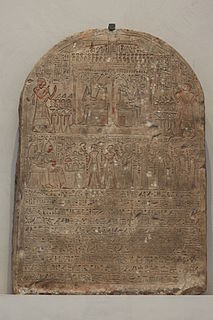 W
WPtahmose was a High Priest of Amun and Vizier of southern Egypt-(Upper Egypt), under Amenhotep III. Certain historians place him at the end of the reign in 1378 BC. Others place him in the first part of the reign.
 W
WRamessesnakht was High Priest of Amun during many years in the 20th Dynasty. He was appointed as the High Priest at Thebes under Ramesses IV. He served in office until the reign of Ramesses IX. It was during Ramessesnakht's tenure that the power and importance of the Amun priesthood grew over Egypt while the Pharaoh's power began to noticeably decline.
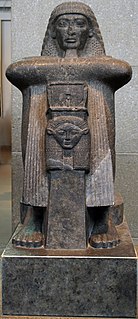 W
WRoma called Roy was High Priest of Amun at the end of the reign of Ramesses II and continued into the reigns of Merenptah and likely Seti II. Roma served as third and second priest of Amun and finally as first prophet of Amun. He was also a count (h3ty-a), a prince (iry-pat) and a divine father pure of hands.
 W
WShoshenq C was the eldest son of the 22nd Dynasty pharaoh Osorkon I and queen Maatkare, the daughter of Psusennes II, and served as the High Priest of Amun at Thebes during his father's reign. Consequently, he was the most important official in Upper Egypt after the king himself. He has generally been equated with Heqakheperre Shoshenq II by the English Egyptologist Kenneth Kitchen and viewed as a short-lived co-regent to his father based on the Nile God British Museum statue 8 which identifies him as the son of Osorkon I and Queen Maatkare, daughter of Hor-Psusennes but this assumption is unproven. In the statue, Shoshenq C is called "the Master of the Two Lands" and the formula "beloved of Amun" is enclosed within a royal cartouche. However, in the text of the statue, he is not given a specific throne name or prenomen, the use of a cartouche by a royal prince is attested in other periods of Egyptian history such as that of Amenmes, son of Thutmose I, and the documents depicts Shoshenq C as a simple High Priest of Amun on the side of the legs of the Nile God, rather than a king.
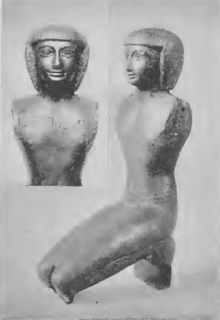 W
WNesbanebdjed II, or in Hellenized form, Smendes II, was a High Priest of Amun at Thebes in Ancient Egypt. He briefly governed from about 992 BC to 990 BC.
 W
WSmendes III was a High Priest of Amun at Thebes during the reign of pharaoh Takelot I of the 22nd Dynasty.
 W
WHedjkheperre Setepenre Takelot II Si-Ese was a pharaoh of the Twenty-third Dynasty of Ancient Egypt in Middle and Upper Egypt. He has been identified as the High Priest of Amun Takelot F, son of the High Priest of Amun Nimlot C at Thebes and, thus, the son of Nimlot C and grandson of king Osorkon II according to the latest academic research. Based on two lunar dates belonging to Takelot II, this Upper Egyptian pharaoh is today believed to have ascended to the throne of a divided Egypt in either 845 BC or 834 BC. Most Egyptologists today, including Aidan Dodson, Gerard Broekman, Jürgen von Beckerath, M.A. Leahy and Karl Jansen-Winkeln, also accept David Aston's hypothesis that Shoshenq III was Osorkon II's actual successor at Tanis, rather than Takelot II. As Aidan Dodson and Dyan Hilton write in their comprehensive book on the royal families of Ancient Egypt:Takelot II is likely to have been identical with the High Priest Takelot F, who is stated in [the] Karnak inscriptions to have been a son of Nimlot C, and whose likely period of office falls neatly just before Takelot II's appearance.
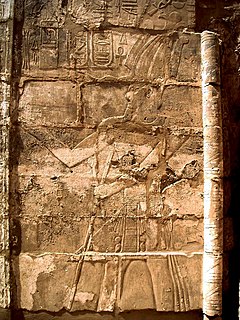 W
WUsimare Setepenamun Takelot III Si-Ese was Osorkon III's eldest son and successor. Takelot III ruled the first five years of his reign in a coregency with his father, according to the evidence from Nile Quay Text No.14, and succeeded his father as king the following year. He served previously as the High Priest of Amun at Thebes. He was previously thought to have ruled Egypt for only 7 years until his 13th Year was found on a stela from Ahmeida in the Dakhla Oasis in 2005.
 W
WThuty or Djehuty was a High Priest of Amun from the time of Ahmose I, at the beginning of the 18th Dynasty.